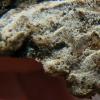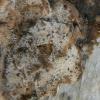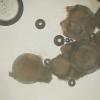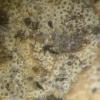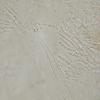
22-08-2013 01:29
Esquivel-Rios EduardoHola todos.Esta Daldinia fue encontrada recienteme

20-08-2013 18:29
Hi againHave you some idea about this fungus on A

19-08-2013 12:55
Salvador TelloHola.Estos peritecios los encontré el 20 de enero

18-08-2013 11:10
 Joop van der Lee
Joop van der Lee
Found on rabbit dung,Fruitbody 0.95x0.73 mm, no ha

16-08-2013 23:56
wiam AbdulHello,I have found this fungus on goat dung, Cleis
protocrea farinosa?
Ismael Wind,
16-08-2013 15:50
On Skeletocutis nivea i found this what i thought was something like hypocrea. Searching around i found out that on skeletocutis the species protocrea farinosa appears. I tried finding asci or something but no luck so far.. Is it likely to be protocrea?
thanks in advance
Ismael Wind
hannie wijers,
16-08-2013 17:34
Re : protocrea farinosa?
Ismael, cna it be Eriopezia caesia?
Peter Wilberforce,
16-08-2013 18:35
Re : protocrea farinosa?
This looks, macroscopically, exactly like a collection of Eriopeziza caesia sent to me by Kerry Robinson from Hertfordshire.
Peter Wilberforce
Peter Wilberforce
Ismael Wind,
16-08-2013 20:56
Re : protocrea farinosa?
i see thank you both. I will send it to Stip to be 100% sure
Stip Helleman,
17-08-2013 01:39

Re : protocrea farinosa?
Hi Ismael,
I look forward to it, Macroscopically it could be Eriopezia but in my experience that was only found on Quercus mainly in the early phase of decomposion.
Stip
I look forward to it, Macroscopically it could be Eriopezia but in my experience that was only found on Quercus mainly in the early phase of decomposion.
Stip
Ismael Wind,
17-08-2013 19:15
Re : protocrea farinosa?
Hi Stip,
it has been send today
thanks in advance
it has been send today
thanks in advance
Stip Helleman,
23-08-2013 08:31
Ismael Wind,
23-08-2013 10:09
Re : protocrea farinosa?
Hi Stip,
thanks!


